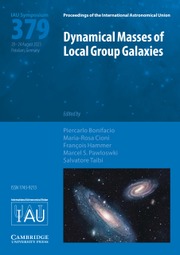No CrossRef data available.
Article contents
Thermal and non-thermal connection in radio mini-halos
Published online by Cambridge University Press: 07 April 2020
Abstract
Several cool-core clusters are known to host a radio mini-halo, a diffuse, steep-spectrum radio source located in their cores, thus probing the presence of non-thermal components as magnetic field and relativistic particles on scales not directly influenced by the central AGN. The nature of the mechanism that produces a population of radio-emitting relativistic particles on the scale of hundreds of kiloparsecs is still unclear. At the same time, it is still debated if the central AGN may play a role in the formation of mini-halos by providing the seed of the relativistic particles. We aim to investigate these open issues by studying the connection between thermal and non-thermal components of the intra-cluster medium. We performed a point-to-point analysis of the radio and the X-ray surface brightness of a compilation of mini-halos. We find that mini-halos have super-linear scalings between radio and X-rays, with radio brightness declining more steeply than the X-ray brightness. This trend is opposite to that generally observed in giant radio halos, thus marking a possible difference in the physics of the two radio sources. Finally, using the scalings between radio and X-rays and assuming a hadronic origin of mini-halos we derive constraints on the magnetic field in the core of the hosting clusters.
Information
- Type
- Contributed Papers
- Information
- Proceedings of the International Astronomical Union , Volume 14 , Symposium S342: Perseus in Sicily: From Black Hole to Cluster Outskirts , May 2018 , pp. 137 - 140
- Copyright
- © International Astronomical Union 2020

